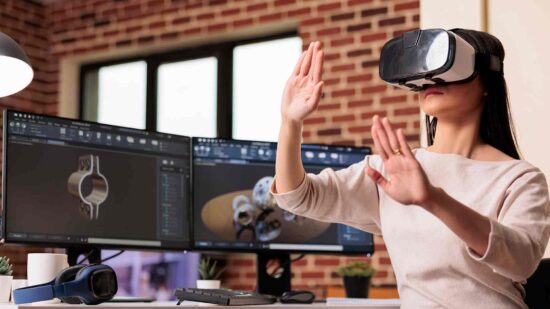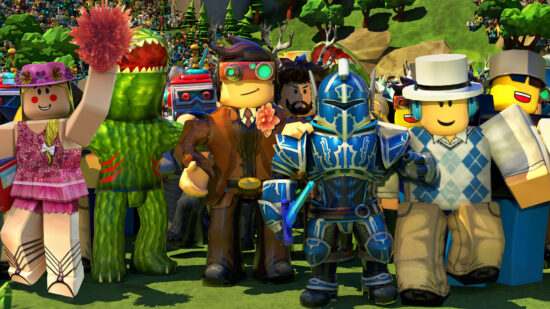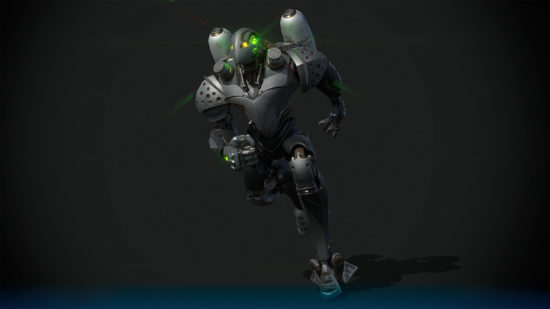There is a long list of different industries where 3D models are widely used: game development, marketing, architecture, engineering, VR/AR apps, etc. As the prevalence of digital content grows all over the world, the demand for top-notch 3D graphics is also strengthening by the day. But how much time does it take to create a well-crafted 3D model, and is it worth the effort?
In this article, you’ll learn the main stages of 3D modeling and what can impact the modeling timescale. Finally, we will look at the average estimated time spent on creating a 3D model and how to speed up the process with custom 3D modeling services.
Main Stages of 3d Modeling Process
When we try to calculate the average time of any creative process, it’s necessary to consider its mechanics and particularities. In general, 3D modeling includes a minimum of six stages, with each of them taking disproportionate time for execution.
- Preparation. Before moving on to the dynamic part of the process, a 3D artist must prepare for the task. It is necessary to collect references of the target object to study from different angles and evaluate how the details can be presented in a realistic way. Finding excellent visual examples usually takes from 30 minutes to a couple of hours.
- Blockout. This phase is a great and easy start in modeling when you don’t need to be worried about topology or details. Blockout means building a rough foundation of a future model to estimate how it should look. This stage can be done in up to 30 minutes if you have nice references and know how to use the software.
- Detailing. The 3D artist chooses the type of modeling, for example, high poly, which divides the model into many polygons — flat polygonal figures. After that, they edit each poly to add detail and bring the model closer to its natural shape. You can learn more about how to make your model look real. Thus, the process can take a couple of days.
- Texturing. After the previous three stages, a model can be considered finished at a basic level but won’t get a lifelike look without texturing. At this stage, the specialist creates a digital material to wrap the model in and adds effects to emphasize the texture and give it a more natural look. Since the texturing process is also divided into several stages (UV unwrapping, painting, shading, lighting, mapping), it can take 20 hours or so.
- Rendering. At this stage, the overall process is done — the background of the model is ready, general color and lighting have been applied, and the concept can be immortalized. During rendering, we digitize the complete scene into a still 2D image that often looks like a real photo. So how long does 3D rendering take? It can take up to a week to get a professional and highly-detailed render.
- Final edits. Ultimately, when all the stages are complete, it never hurts to check the 3D model for defects and fix unwanted details. The final validation process should not be rushed as the model is close to launching, so all errors should be checked and corrected carefully.
Check out real-time 3D modeling services
that will add depth to your digital world!
What Can Impact the 3D Modeling Timescale
Unfortunately, you cannot rely only on the basic stages of 3D modeling to calculate an estimated time of creating a 3D model. Several factors can move the timeframes up or down, and we examine them below.
Level of detail
Details are most often of particular importance, as they add accuracy and perceived quality to a model. Whether you want to create a 3D model for augmented reality or other purposes, the complexity of a 3D model and estimated timescale will most often depend on the level of detail you select.
For example, you can create a basic model of a stone or chair that does not contain any special features — such models are completed quickly, usually within one day. On the other hand, if you need to build a 3D model of a custom, complex object, for example, a rare artifact, then a 3D artist can add the tiniest incisions to the blocks within a week.
Modeling method
There are many types of modeling, but the two most popular are polygonal and spline modeling. Both methods differ in purpose, complexity, and, accordingly, the time they take. For example, polygonal modeling is categorized into low and high poly. The more polygons (2D shapes) a model consists of, the more detailed and high-quality it can be made. A high-poly approach takes at least twice as long as basic modeling with low poly.
Additional operations
3D models are rarely presented to the public in raw form. Instead, they are usually processed further, such as for animation or rendering. Rendering is the process of creating an HD-quality still of a 3D model in a particular environment. It can also take quite a bit of time to create textures and materials for the model, but this is important when you need the best quality in order to impress your clients and target audience.
Average Estimated Time on Creating a 3D Model
Considering all the factors, a simple 3D model can be created in a couple of days, but a high-quality model can take from 70-110 hrs to craft, if not more.
Below are a couple of 3D models developed by 3D-Ace company, and the corresponding time spent on their modeling.
Ship model
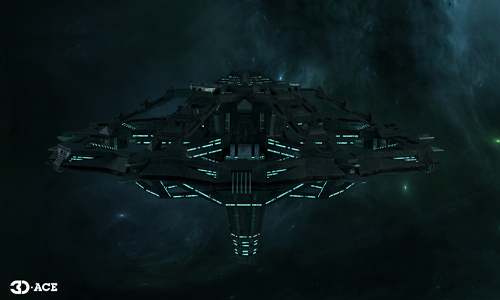
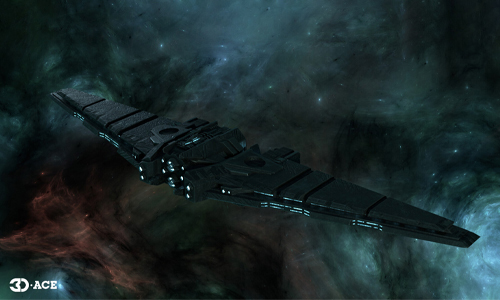
Time spent on the creation
- One ship was made in 30-32 hours
- The low-poly stage took 12h
- The high-poly stage took 8h
- The texturing stage took ~ 12h
Particularities of development
Ship models are part of the 3D game Stellaris, a desktop strategy, developed by 3D-Ace. Many ships are present in each scene and under the player’s control. Our team worked hard to make the vessel look spectacular, but this did not require vigorous work on details, since the user doesn’t have the opportunity to see them up close.
Rifle model

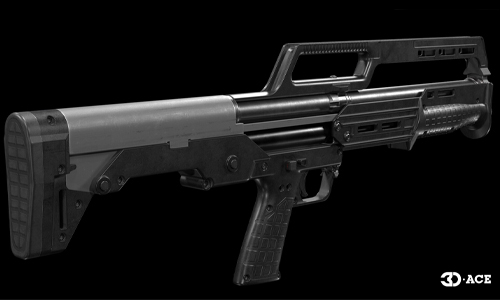
Time spent on the creation
- The model was made in 110h
- The low-poly stage took 70h
- The high-poly stage took 20h
- The texturing stage took ~ 20h
Particularities of development
A rifle modeled by a 3D-Ace specialist for a 3D game is always visible in the player’s hand and is close in the frame, so it must look convincing and detailed. In addition, some parts of the rifle must move when firing, so the animation of specific details was necessary. Moreover, the team didn’t have a real example that would help in modeling for orientation on natural details. Thus, our experts took rifles from different videos as an example.
Sneaker model
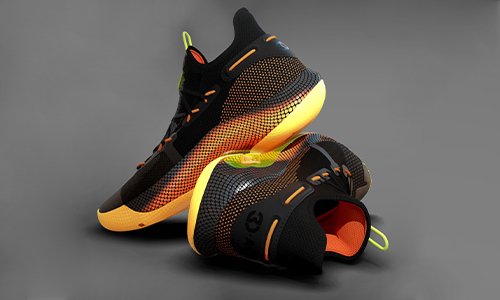
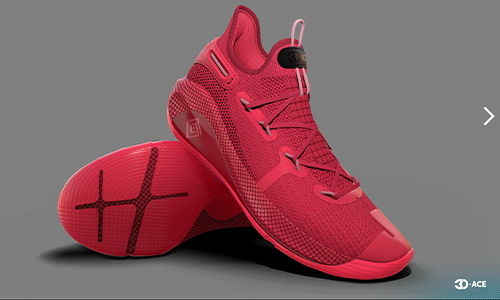
Time spent on the creation
- These models were made in 70h
- The modeling stage took 50h
- The texturing stage took 20h
Particularities of development
3D-Ace created these sneaker models for advertising, so they had to look attractive and lifelike. In addition, the models were developed for viewing in AR (augmented reality), which means that it was impossible to give them a lot of details made with high poly. This would simply take up too much memory. A model that is too heavy will affect the augmented reality app performance.
How long does it take to model a 3D character?
3D characters creation can be different from modeling assets. There are multiple steps to consider during development, such as topology, lifelike textures, appearance features, costume details, etc. In addition, hyper-realistic character modeling takes much time to make each poly looks natural. That means 3D character modeling can handle about 110 hrs to a couple of months.
All these numbers are relevant for qualified specialists. On the other hand, it will take more time for an amateur, while a professional will create not just a 3D model of satisfying quality but an exceptional three-dimensional model that can impress anyone.
How Long does It Take to Make a 3D Model with a Partner?
If you master 3D modeling or hire an in-house team, it will take much more time than is suitable for most projects. Thus, it’s better to entrust it to an external team of professionals that have decades of experience and all the resources to give form to the desired result.
3D-Ace is a studio of experts that provides 2D and 3D design (+ other services) with a cherry on the top. Since our founding in 2009, we have always gone the extra mile for our customers. Each project we have completed helps our clients achieve their business goals and receive positive feedback. The core of our expertise lies not only in delivering complete projects. You can outsource certain stages of work to us to save time and get excellent results.
Contact us, and together, we will determine the timescale for your project and every detail you want to bring to life!

